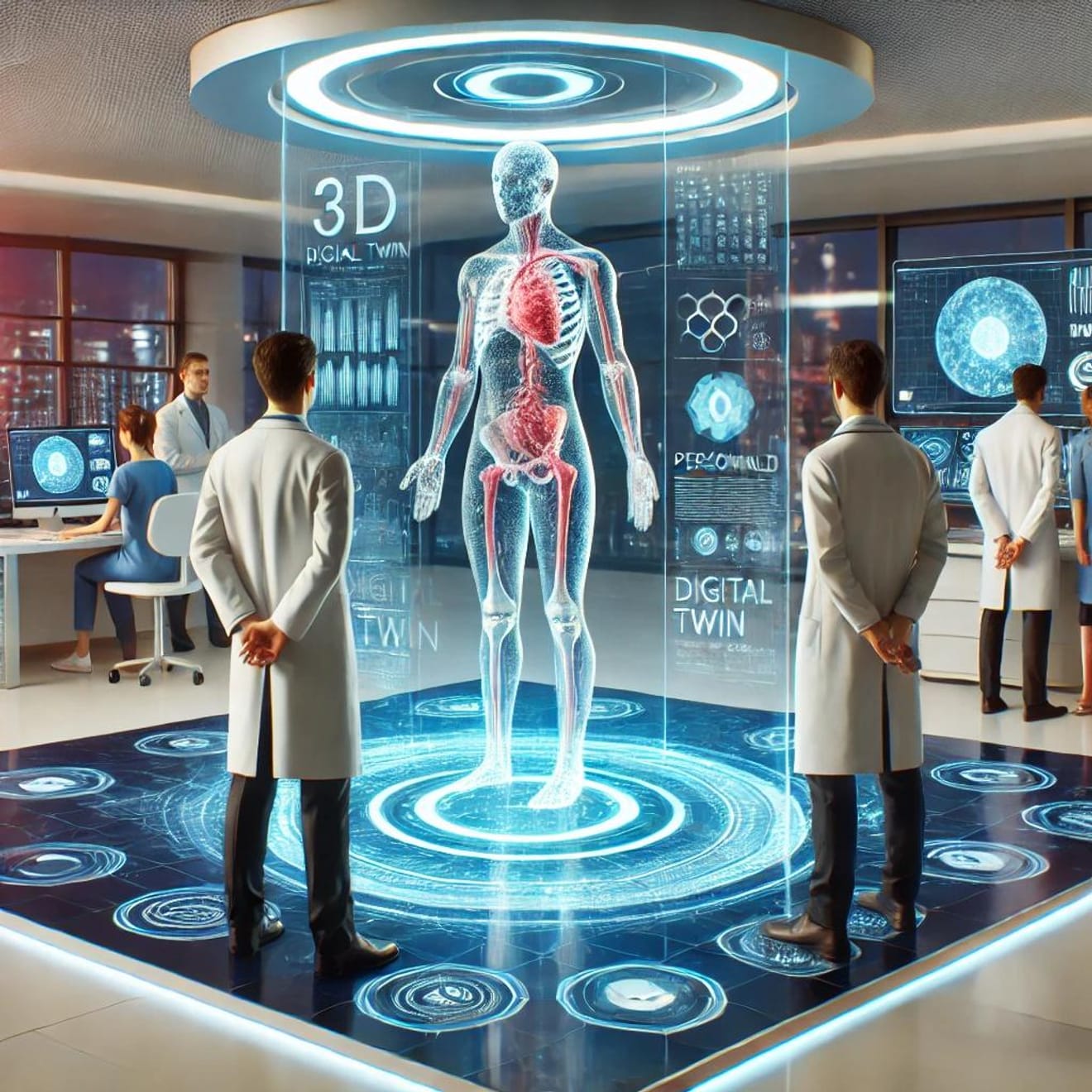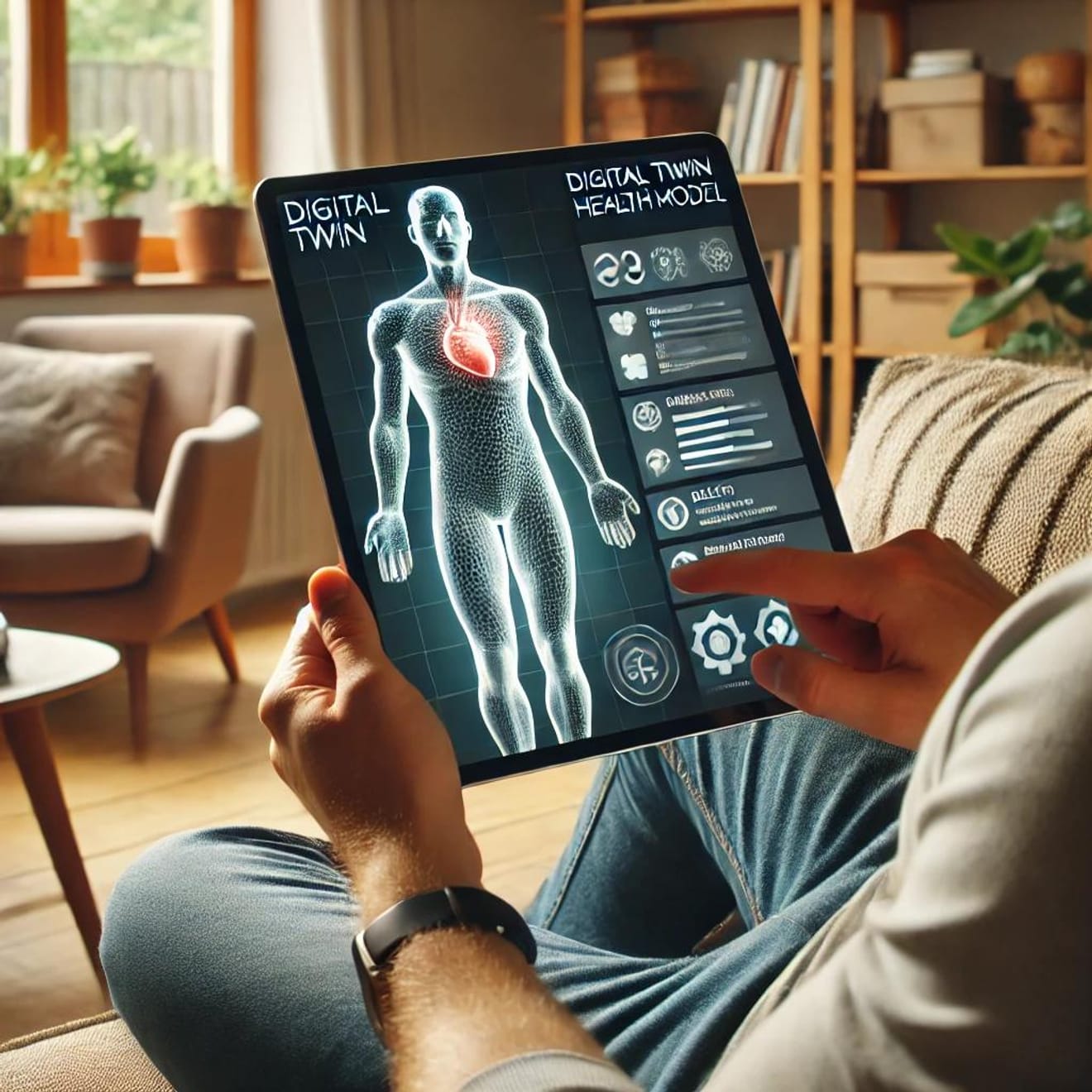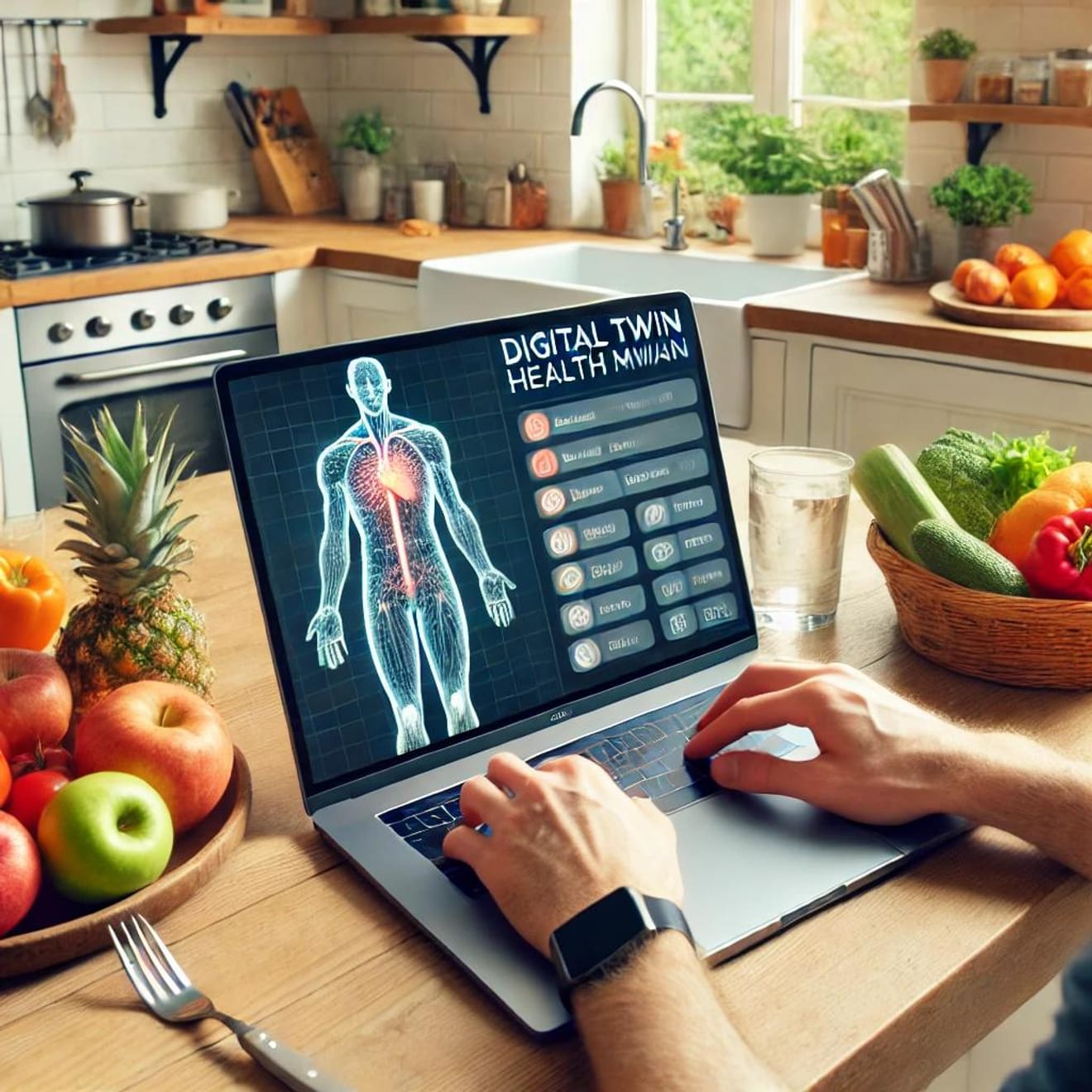Digital Twin technology is one of the innovative technologies rapidly gaining attention in the healthcare field. Digital Twin is a technology that identically replicates a physical world object in a virtual world, and it is used to simulate health conditions in a virtual environment based on an individual's health data. This technology dramatically improves disease prediction, treatment planning, and the efficiency of health management, opening up new possibilities in medicine. This article will examine how Digital Twin technology is used in healthcare from five key aspects.

1. Personalized Disease Prediction and Prevention
Digital Twin technology predicts the likelihood of disease onset based on an individual's health status and suggests preventive measures.
Disease Simulation: Digital Twin virtually simulates how a disease will develop and progress, reflecting an individual's genes, lifestyle, and medical records.
-Early Warning System: For example, the possibility of cardiovascular disease can be identified early through a Digital Twin, and lifestyle improvements or medication can be recommended.
This allows patients to participate more proactively in disease prevention and to perform health management more effectively.
2. Treatment Testing in a Virtual Environment
Digital Twin provides tools to test treatment methods in a virtual environment before performing actual treatment.
Drug Response Simulation: Using a patient's Digital Twin, it is possible to see in advance how a specific drug will affect the patient. In the case of drugs with a high risk of side effects, alternative treatments can be suggested.
-Surgical Planning Optimization: Surgeons can use Digital Twin to plan surgeries and find the optimal approach through virtual simulations.
This technology reduces the possibility of failure in the treatment process and contributes to providing the best possible outcome for the patient.
3. Healthcare Personalization Innovation
Digital Twin technology enables patient-centered, personalized healthcare.
-Customized Health Management: Digital Twin suggests a health management plan tailored to the patient's characteristics and needs. For example, for diabetic patients, a diet, exercise, and medication plan can all be personalized.
-Real-time Health Status Monitoring: The patient's Digital Twin reflects data collected from wearable devices in real time, accurately identifying the current health status and suggesting necessary measures.
This personalized approach helps patients achieve their health goals more efficiently.

4. New Drug Development and Clinical Trial Innovation
Digital Twin also plays an important role in the new drug development and clinical trial process.
-Virtual Clinical Trials: Digital Twin can be used to test the efficacy and safety of new drugs in a virtual environment. This significantly reduces the time and cost required for actual clinical trials.
-Patient-tailored drug design: Using a patient's Digital Twin, it is possible to predict the impact of a drug on an individual patient and modify the drug design if necessary.
This technology increases the efficiency of drug development and can provide patients with safer treatment options.
5. The Combination of Digital Twin and Remote Healthcare
Digital Twin combined with remote healthcare produces greater synergy.
-Remote Diagnosis and Treatment: Digital Twin helps medical professionals monitor a patient's health status remotely and suggest appropriate treatment as needed.
-Long-term health management: The patient's Digital Twin tracks changes in health status over time and is used to develop long-term health management plans.
This technology improves healthcare accessibility and contributes to improving the quality of healthcare worldwide.

Digital Twin technology is becoming an important tool that defines the future of healthcare. This technology is leading medical innovation in various fields, including disease prediction, customized treatment, new drug development, and remote healthcare. In particular, personalized health management and real-time monitoring based on patient data are changing the paradigm of medical services. As Digital Twin technology continues to develop, we will experience a more effective and accessible healthcare environment. As a result, patients will be able to enjoy better health and quality of life.
Comments0